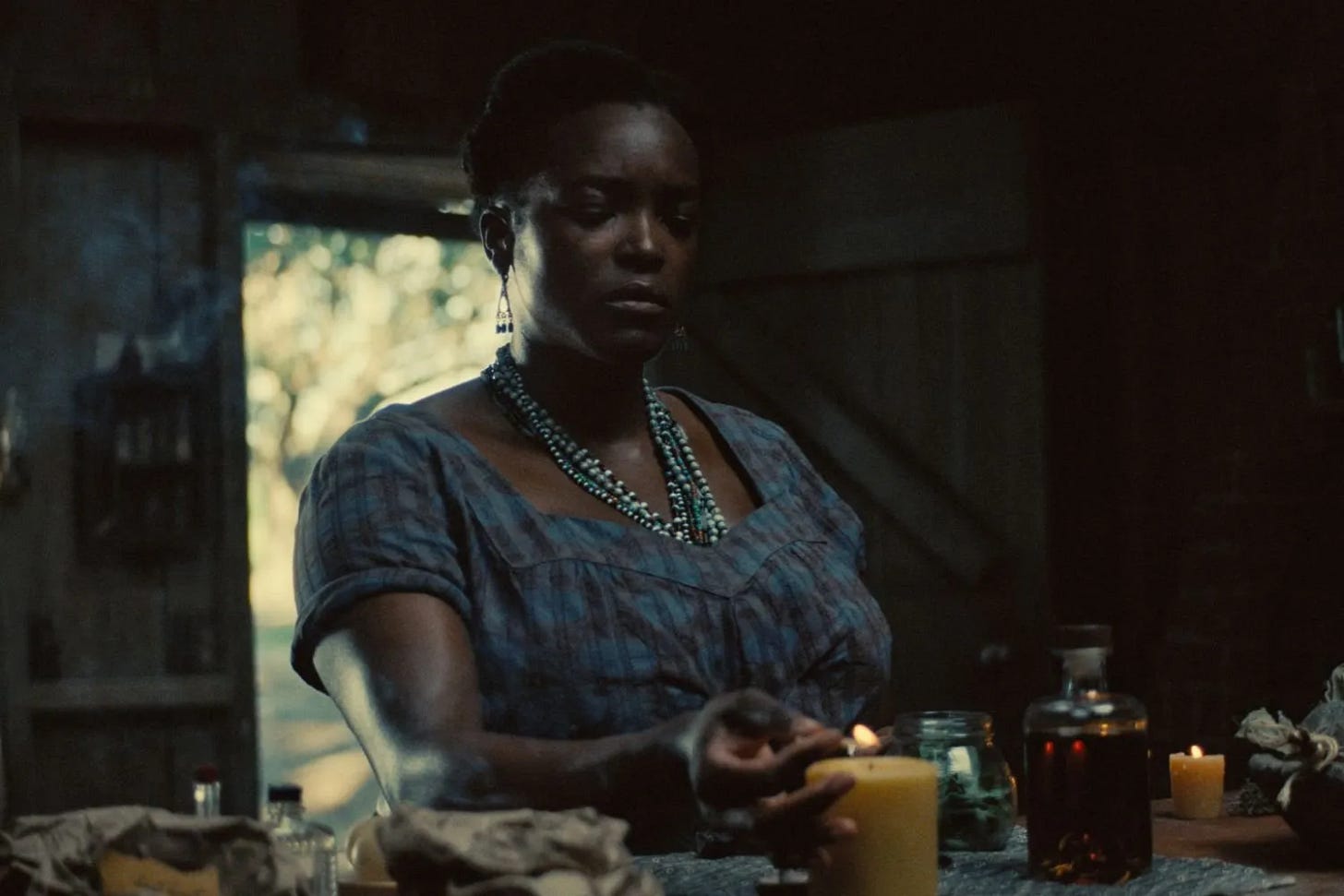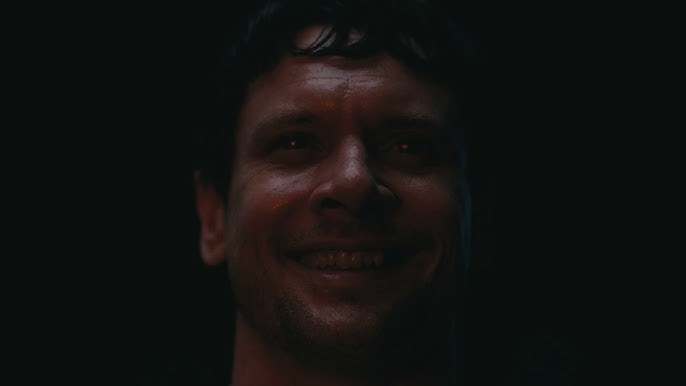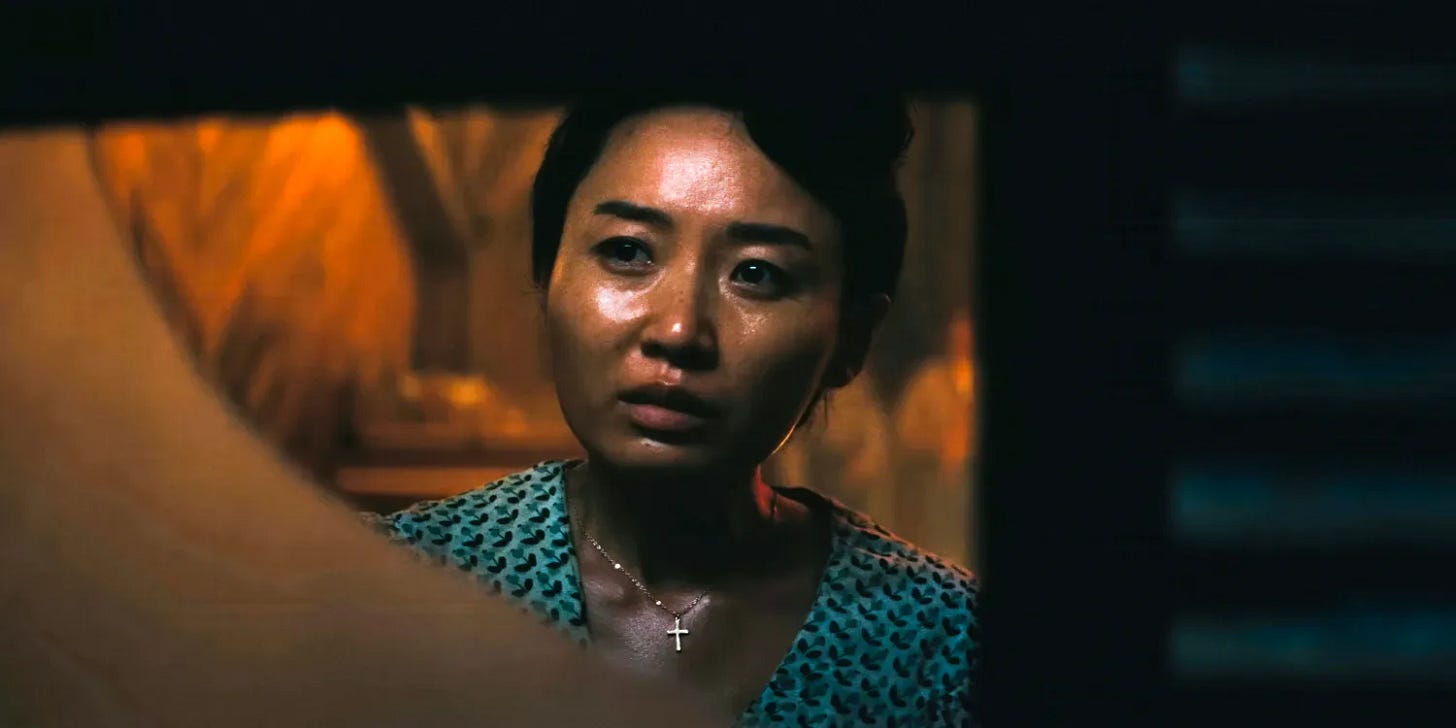*SPOILERS* (Of course)...
After grossing over $236 million worldwide, becoming the fifth highest-grossing film of 2025 and the highest trending topic, Ryan Coogler’s Sinners has positioned itself as one of the most well received horror films in a sea of sequels and regurgitated plots. The film’s story incorporates black vampires - a Hollywood rarity, whilst centering the lives of two twins from the Mississippi Delta, Smoke and Stack alongside their cousin Sammie.
After returning home from World War I, the twins use stolen money to buy a sawmill, transforming it into a juke joint for the local Black community. Joined by Sammie, an aspiring blues guitarist, they unknowingly unleash supernatural forces tied to racism, colonialism, and the land’s dark legacy. In addition to blending horror with historical and cultural themes, Sinners explores Black spirituality, resistance, and ancestral power.
Imdb gave this film a rating of 8.1/10 cementing it within the sites top 250 films at #247. Other reviews reflect this high praise, with Rotten Tomatoes awarding the film 98% on it’s ‘Tomatometer’, and Empire Magazine rating the film 4/5 stars. As both a critically acclaimed and commercially successful film, I hoped that my high expectations of the film would be satisfied, and that the hype wasn’t sensationalised. It’s safe to say I wasn’t disappointed, though I ought to provide more detail…
Production
As an award-winning American filmmaker out of California, Coogler has been around for a while, gaining acclaim with Fruitvale Station (2013) onto Creed (2015) and Black Panther (2018), the highest-grossing film by an African American director. This latest project is the most recent in a long line of films by Coogler centering the black experience. After co-founding Proximity Media, Coogler has produced films like Judas and the Black Messiah, also known for exploring themes of race and social justice. Many (myself included), consider him one of the most influential directors of his generation.
Alongside him, Coogler brought on D.P. Autumn Durald Arkapaw, the same mind that brought us top notch cinematography in Wakanda Forever (2023). Coogler’s use of artists that have worked on other major cinematic works for the black community speaks to a certain level of dedication in the production of Sinners.
What better to pair with an iconic film than an iconic soundtrack? Ludwig Göransson, a regular collaborator with Ryan Coogler helped bring this film to life. Throughout the span of his career, he has worked on major films like the already mentioned Creed, Black Panther, Black Panther: Wakanda Forever, in addition to Oppenheimer (2023).
Onto some of my favourite acting performances, I must say this has to be my favourite of Michael B. Jordan’s roles. Primarily, I am always easily impressed when actors are able to split themselves into playing twins; oftentimes displaying opposite personality traits and character motivations according to the separate characters. Michael B. Jordan executes this incredibly well, where the twins’ interactions with each other and the rest of the characters felt genuine throughout the film.
Wunmi Mosaku’s performance as Annie, as brilliant as it was, is highly underrated for me. It seems as though discourse surrounding peoples confusion as to whether she was Stack’s mother or lover were not only unfounded and rooted in stereotypes, but eclipsed more important discussions surrounding her acting performance. In this regard, the character was incredibly well executed. From this storyline we can derive lessons about discernment which Mosaku’s character was essentially the face for throughout. Her success in this, in addition to her respectful depiction of hoodoo stood out especially for me.
The other acting performance of note for me came from Miles Caton as Sammie, reminding us why first time actors deserve more roles. We’re in desperate need of seeing some less known faces on our screens, who we as the audience can rest assured were hired for talent rather than marketability. His voice - a main feature of the film, was incredibly rich and memorable, helping to add texture to the stories’ landscape.
Symbolism
For a film whose story is soaked and stained in a deep historical and cultural significance, the symbolism present within the movie adds necessary details.
The Twins
Before the chaos, many point out that the distinct hat colours are a reference to their separate mob affiliations; the Irish for Smoke (Blue) and the Italian for Stack (Red). Additionally, where their real names (Elijah and Elias Moore) are rarely used in the film, their nicknames can be perceived literally in a way that reflects what they’re known for locally. Smoke might be named so because he smokes a lot, whereas Stack got his nickname because he’s known for making money. Alternatively, Smoke might have gotten his name from his willingness to fight whilst stack is more business oriented.
As the film continues, Smoke and Stack begin to represent the balancing act between what will become two opposing forces. Stack’s red accents can be seen to foreshadow bloodshed where Smoke’s blue accents speak to a certain purity. This foreshadowing would later materialise itself in Stack’s eventual transition and Smoke’s survival in the end which in itself epitomises the necessary balance between life and death. There’s a chance the story could have only ended one way, with one twin’s death offering as payment for the other’s life.
This ties in beautifully with what is perhaps the most important significance regarding the twins, which Ryan Coogler himself notes, was the inspiration for their story. Coogler himself mentions he drew inspiration from the Yoruba religion and the twin deities known as Ibeji. In the Yoruba tradition, twins are believed to be capable of bestowing immense wealth upon their families (as displayed in the film by the twins’ affinity for wealth), or misfortune to those who do not honor them.
As the story goes, the nurturing goddess Yemaya gave birth to twins, but tragedy struck when one died in infancy. Grieving deeply, Yemaya channeled her sorrow into a sacred act of creation, carving a wooden replica of the lost child. Through her love and divine power, the figure was brought to life, becoming the spiritual embodiment of the departed twin. This miraculous act gave rise to the Ibeji Twins, symbolizing eternal love and the enduring bond between siblings. For me, Stack’s re-emergence as a vampire having essentially risen from the dead is comparable to that of the original story, where he becomes the embodiment of the lost twin stuck in time. Where the origin story speaks to an eternal love between two brothers, the film echoes that same sentiment, where the end of credits scene reveals how years later, when smoke is nearing the end of his life, we see him revisited by Mary (played by Hailee Steinfield), and his brother, implying that despite his vampiric ways, love persists.
Sammie as Robert Johnson
Speaking of sacred legend, Sammie’s story has been likened by many to the story of Robert Johnson, a 27-year-old blues musician who died under mysterious circumstances in clarksdale mississippi where the film is set back in 1938. The musician entered American folklore legend after reportedly having made a deal with the ‘devil’ in exchange for his ability to play the guitar. With the story gaining increased traction now, I think it’s important to clarify that the ‘devil’ often portrayed in the story is actually supposed to have been Papa Legba, the deity positioned as intermediary between the spirit and human realms.
Vampirism
With vampirism being one of the films main themes, many of us were dying to know what the mythological creature was supposed to represent in this context. Coogler set the record straight on this one, citing vampirism as being representative of the human condition. According to Coogler, ‘Vampirism represents an escape, but also a trap in this movie’. Out of all the mythological creatures most commonly depicted in mainstream media, what Vampires represent most is seduction, temptation, lust. For Stack, it was his own lust for Mary that led to his transition and introduction into vampirism.
Irish Faerie Folklore
Of course we can hardly forget Remmick (played by Jack O’ Connel), and his associates, visualising the irish immigrants present in the Mississippi Delta during that time. But in this context, many of us forget about vampire lore native to Ireland. The Irish also have their own vampire who is actually a faerie drawn to artists’ energy, mimicking that of Remmick’s own predatory interest in Sammie. When the vampires are seen dancing with everyone in a circle, this is in many ways reminiscent of faerie circles in Irish mythology, where once entering one and engaging with its stewards, you are doomed to the other realm.
For me, the highlight of the film was the sounds of black America sequence accompanied by Sammie’s ‘I Lied To You’ - the film's standout track. The sequence featured a captivating shot of the entire joint and it’s customers, as well as incorporating a number of references to black culture throughout the decades. At the same time, the sequence paid homage to the Chinese representation in the film.
I had only 1 complaint…
Honestly, I felt the film could have explored the origin stories of the vampires more than they did. The explanation of the vampires and their traits felt more like the regurgitated characteristics adopted by most fictional vampires than they felt fitting within the context of the story. It would have been nice to see an interesting origin for Remmick particularly as we learn from certain clues (i.e. Him mentioning that he was alive when christianity was introduced to Ireland), that he is a very old vampire. Alternatively, we can see the lack of origin as further exacerbating the eeriness of the vampires in the story if we don’t know exactly how they began.
Addressing the rumours….Onto the discourse
1. The unfortunate Remmick x Sammie shippers…
By now we’ve all seen that one clip of the girl claiming that part of the motivation behind Remmick’s obsession with Sammie came not from a desire to abuse his musical talent but from a kind of romantic attraction… As many have pointed out, there is a huge problem with perceiving this as a romantic attraction, particularly when you consider the racial inequality at play contextually, in addition to what was obviously predatory behaviour from Remmick. The ‘shipping’ of the white vampire with the black man who he is a direct threat to, is very informative of how people tend to view interracial relationships in that the white counterpart necessarily has a powerful hold over their supposed partner.
2. ‘Sinners was a film about the power of Christianity’
Then there are the claims emerging from certain corners of christiantok, where people attending a movie entitled ‘Sinners’ were disgusted by the vast representation of evil in the movie. ”Sinners was an evil movie!” many came away saying. But the depiction of evil says nothing about the message of the film itself, which speaks more to the danger to be found in appropriating and invading black spaces, the agents of this appropriation, and the unforeseen saviours from this invasion i.e. indigenous practices (Hoodoo). Contrary to a couple of takes I’ve seen where people claim that Sammie’s return to the church at the end sends a message about the power of christianity against evil, we actually saw several instances where those that survived were saved by Annie’s practice, such as smoke’s protection prior to removing the necklace blessed by her. Annie is often positioned as the guardian of the threshold, where in the movie the threshold is the barrier preventing the vampires from entering without permission. In hoodoo culture, the threshold is a place of pungent power for an individual, which speaks to Annie’s use of hoodoo tradition to protect them all.
Despite the religious extremism pushed onto Sammie, Christianity failed to save him when he faced the threat of true evil. As such, his return to the church felt more like a decision to show his father how he had failed him. In fact, Christianity is shown to complement white supremacist evil highlighted in the film. Grits and Eggs podcaster Deante Kyle pointed out that as a culture vulture who had previously had his own culture stolen, and became victim to assimilation into white supremacist narratives and religious extremism, Remmick sought to subject others to this uniformity (vampirism), hence his quest to turn everyone, particularly those who displayed uniqueness, individuality and connection to culture like Annie and Sammie.
3. ‘Hailee Steinfield was the wrong pick for Mary’.
Potentially the most frustrating conversation I’ve seen coming out of this film comes from those claiming that the actress wasn’t suited for the role of ‘Octoroon’.
For the most part this take seemed guided by a misunderstanding of what it meant to ‘pass’ in the deep south in 1900’s America, where the one drop rule was very much still in application. Here, someone who was even 1/8th more black than Mary, i.e. her mother, wouldn’t have been able to pass for white. Hailee’s lineage perfectly matches that of her characters and so the discourse mostly just confuses me. Besides, having a character who didn’t pass and therefore wouldn’t act as the bridge between blackness and its potential invaders would have weakened the film’s overall messaging.
4. ‘Grace’s character was about false allyship between black and asian communities’.
There is an argument for why this take is being made, given the presence of this conversation throughout history in addition to the film’s own story, where in the end, Grace sacrifices a room full of people to save her daughter. Nevertheless, it felt to me as though the asian representation felt more like a true depiction of the era, making the chinese immigrants of the mississippi delta visible in the way they would have been, rather than to make a point about the tension between black people and other communities of colour.
Takeaway
Overall I must say I thoroughly enjoyed the film, and judging by the unmistakable sound of applause from all around I can see that so many others did too. The film was so incredibly packed with meaning, so much so that I’m sure I’ve missed so many points, (feel free to comment on those). But for now, I’ll say I agree with the other ratings given thus far, awarding Sinners 4/5 stars.
Asisa


















This is a beautiful review with such good takes on the film. I do think that Sammie returning to the church could also be commentary on how people often return to their faith when greatly threatened, like how he started saying the lord's prayer in the water. But upon getting to the church and hearing his father try and get him to give up his gift he sees the parallels between what Remmick asked of him and what his father was asking, and said no more. Especially since at the beginning of the movie it flashes between Remmick and his father, he could just be thinking about that night, or it could have meant something.
👏🏽👏🏽👏🏽👏🏽